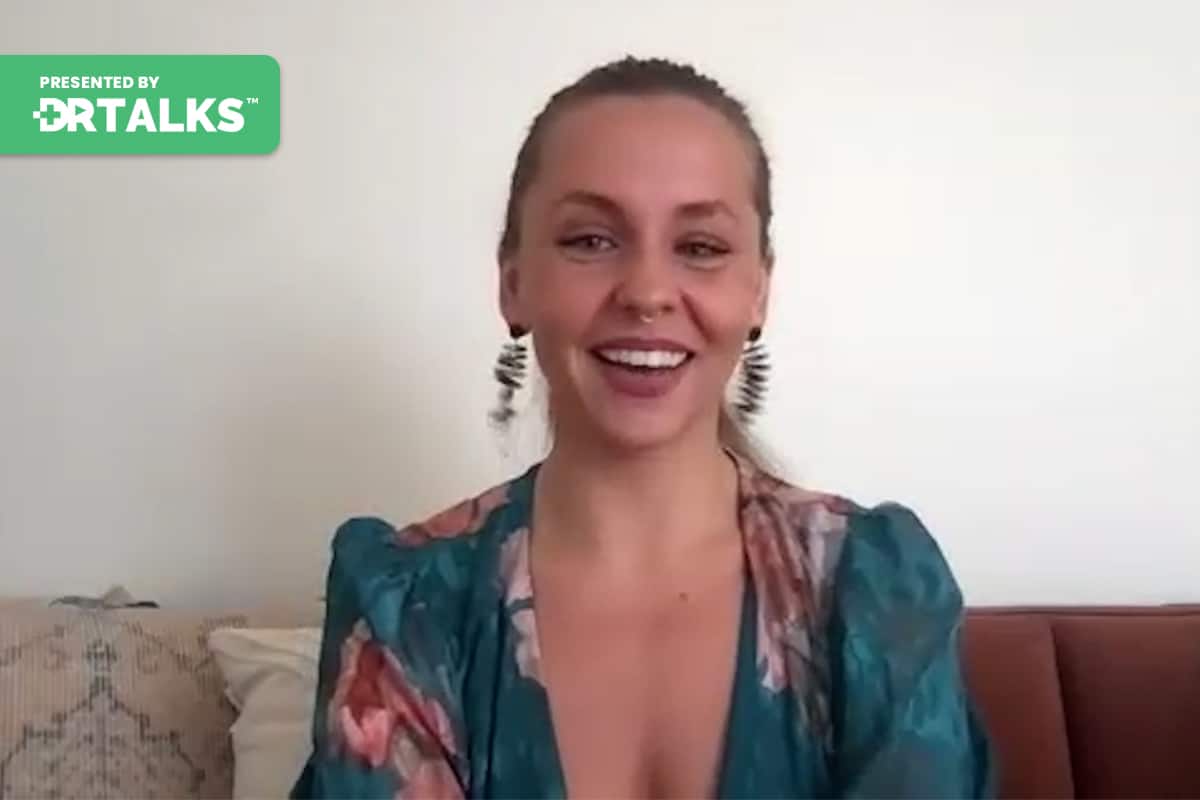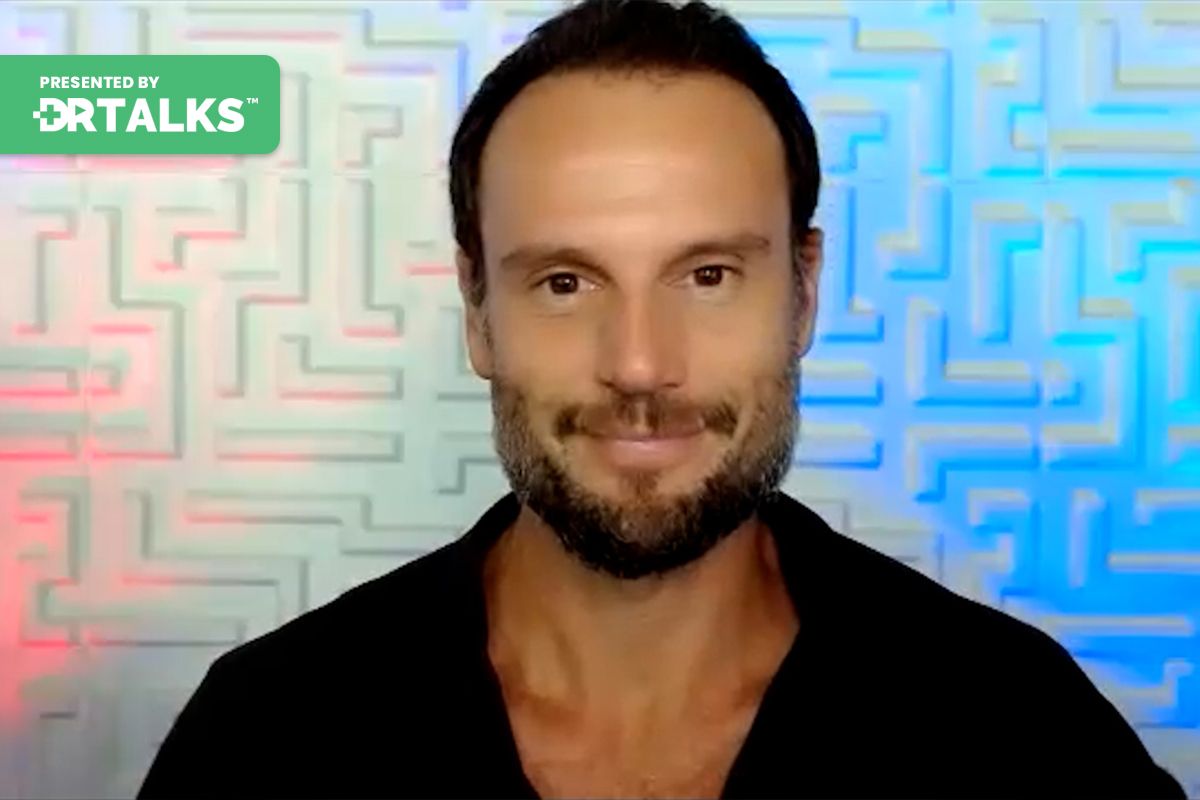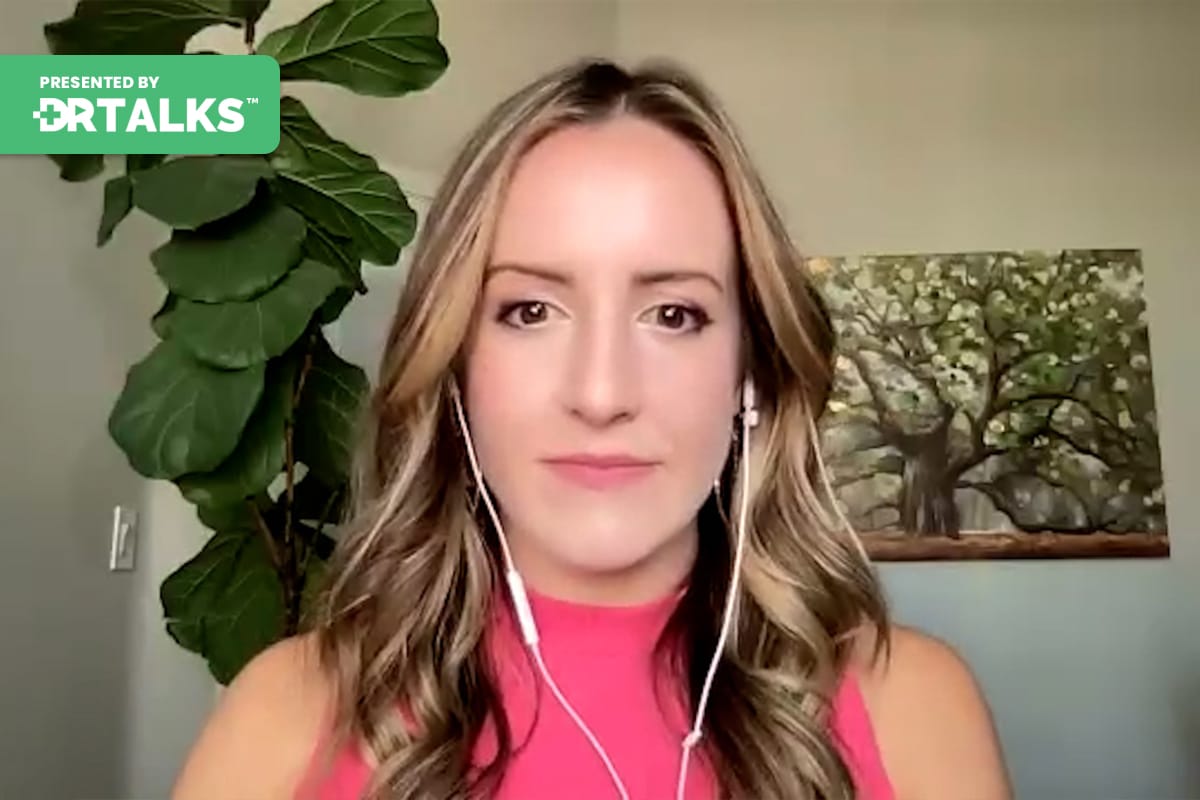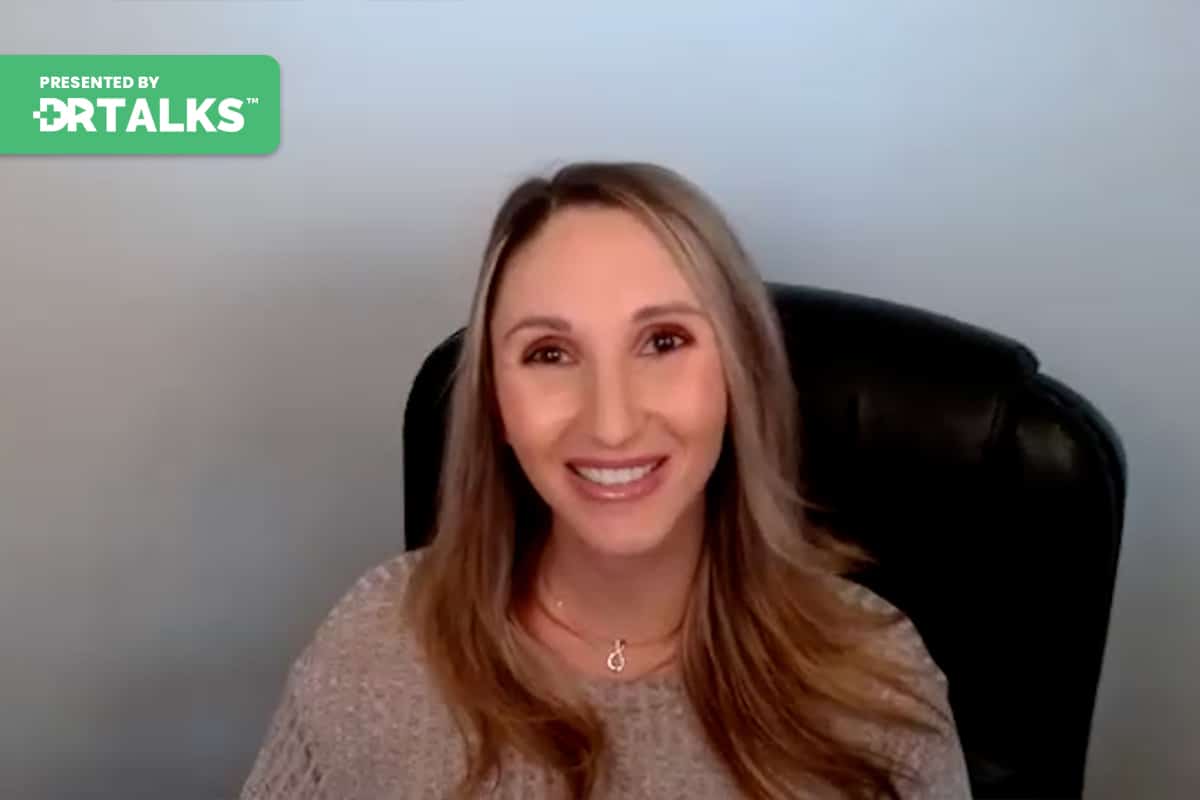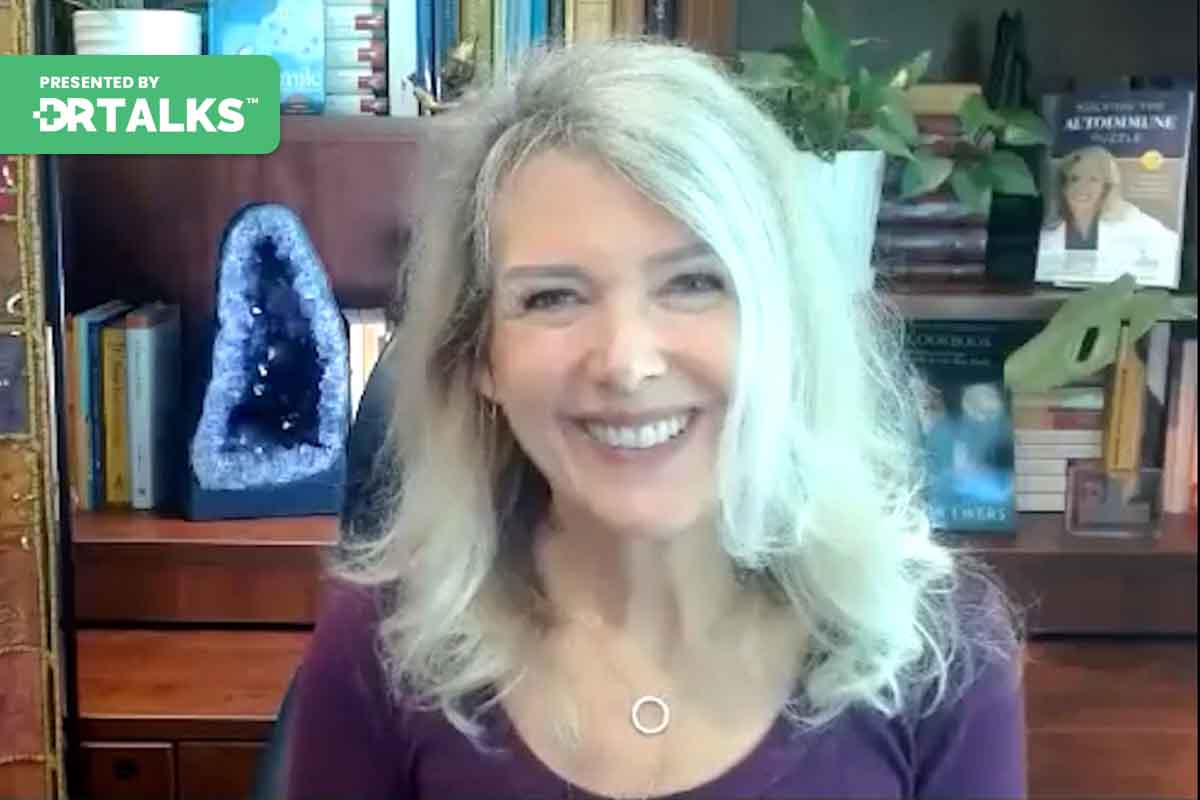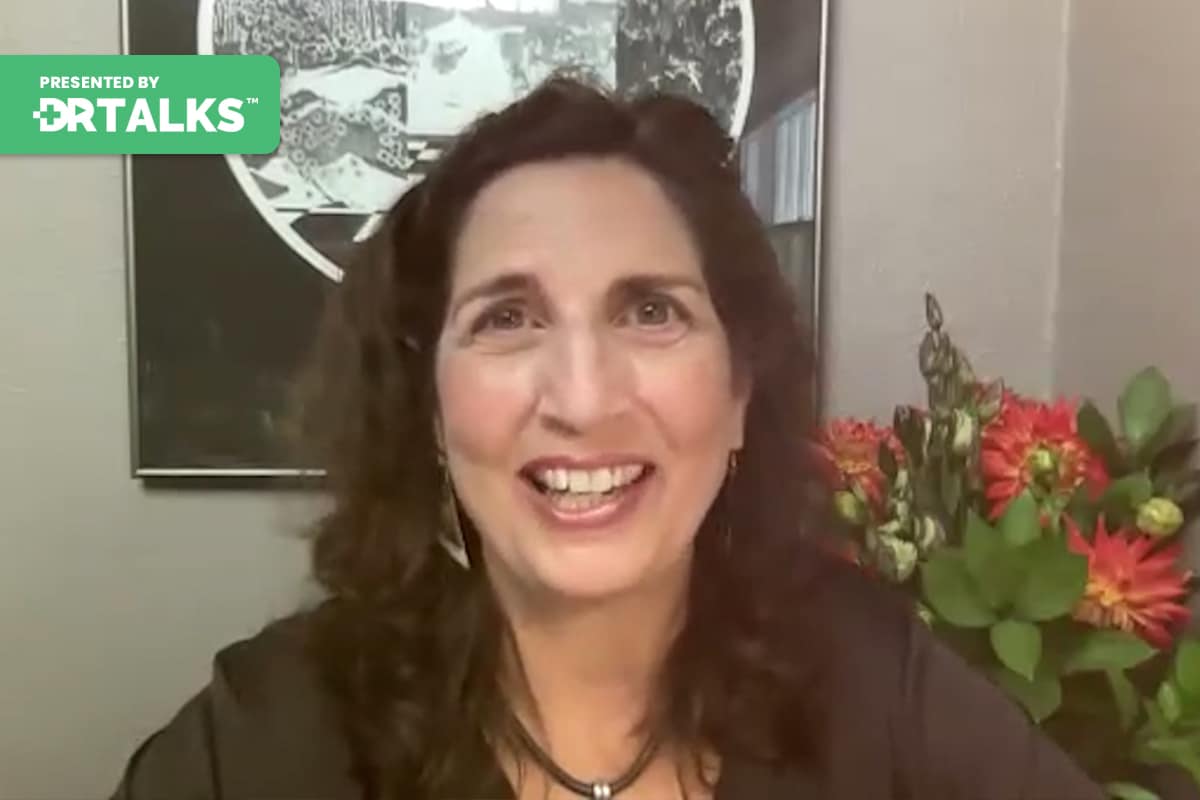Join the discussion below

Betsy Greenleaf, DO, FACOOG (Distinguished)
Betsy Greenleaf, DO, FACOOG (Distinguished). Premier women’s health expert, entrepreneur, inventor, and business leader, who specializes in female pelvic medicine and reconstructive surgery for over 20 years, Dr. Greenleaf, is a trailblazer as the first female in the United States to become board certified in Urogynecology. She possesses a professional... Read More
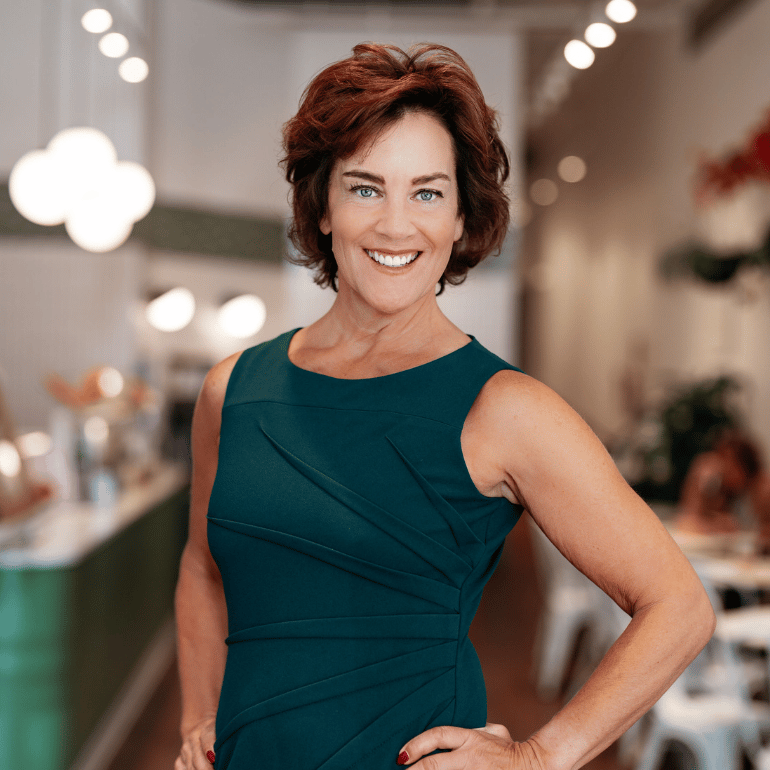
Best-selling author Debra Atkinson, MS, CSCS is a fitness industry expert with over 3 1/2 decades of experience, and the founder of Flipping 50. She is a hormone-balancing exercise expert who works with women for optimal energy and vitality before, during, and long after menopause. She is a frequent keynote... Read More
- Discover the number one sport for sexual desire
- Grasp the significant changes exercise induces in midlife women’s hormonal balance
- Recognize how weight loss efforts can affect your sex life and learn tips to promotes health and sexual vitality
- This video is part of the Solving Sexual Dysfunction Summit
Related Topics
Autoimmune Disease, Autoimmunity, Chronic Illness, Exercise, Genetics, Gut Health, Inflammation, Microbiome, Nutrition, Science, Sexual HealthBetsy Greenleaf, DO, FACOOG (Distinguished)
Hi, everybody. Welcome back for another session of the Solving Sexual Dysfunction Summit. I’m your host, Dr. Betsy Greenleaf. And we have with us, Debra Atkinson. And we’re going to be talking about some really interesting things in this session. So make sure you stick around and listen to this one because this is going to be great. So thank you so much, Debra, for being with us today.
Debra Atkinson, MS, CSCS
Thanks so much for having me. What a fun topic.
Betsy Greenleaf, DO, FACOOG (Distinguished)
Well, first of all, I want to go and ask I love everyone’s back story. So you’re in the fitness world. How did you start in that?
Debra Atkinson, MS, CSCS
Totally by accident. To be truthful. So I grew up and I was two years into a graphic design major. And I was also two years into starting to walk and that became jogging. And then I was a runner. And I just felt like all those graphic designers and art students stayed up all night, did their projects, smoked, and drank. And I’m like, I don’t fit in here, you know? I’m like, a total health nut. Back in the 84’s, you know, when not everybody was doing that. And so I stuck one foot in physical education and left the other one in graphics. And at the end of the semester, I was like, no, I definitely need to change. This is what I want to do and I’m a teacher. I didn’t even realize that. But I want to empower people to, you know, be better students, bosses, daughters, sons, moms, whatever. But I think people are better in their role. And that was the first time I really had done self-initiated exercise, not because somebody said to run laps or be in a sport. And I really got it. And I was a little sad that I hadn’t had that kind of motivation when I was in sport in high school because it would have, I think, changed things for me dramatically earlier in my life. But that’s how I got started. And I was the youngest of four kids, but my parents were significantly older. So I spent a lot of time with older adults in conversation and learned how to build a rapport and have conversations with them. So as an undergrad, when we had all the experiments where we had to have case studies and clients, I was given the older adults. I was matched with retired faculty members and I enjoyed it and so did they. We jived. I understood them. I could communicate with them with respect and understand where they were coming from. And so I was doing research really for 30 years before I ever got into founding Flipping 50 and realized these people are complaining. Nobody understands them. They’re being told, here you are, this is menopause. What do you expect? And baby boomers were just not having that but they didn’t have another answer. So that’s how I decided I’m serving midlife women.
Betsy Greenleaf, DO, FACOOG (Distinguished)
I love that. And your brand and everything that you’ve been doing has been so incredibly amazing. And I think I, I definitely would credit you for being kind of like the founding person to be focusing on midlife exercise and wellness. So I think you’ve kind of paved the way for a lot of other people, but I think you’re like the OG, like the original, you know.
Debra Atkinson, MS, CSCS
You know, I’m, I’m thrilled, and thank you so much for saying that. I’m thrilled. There weren’t a lot of people talking about it 10 years ago. And yet we all know, I think when you get a great concept for a book or you get a great idea, inevitably somewhere else in the world, other people are doing it. But we weren’t talking about it openly, certainly not like we do today. And so I’m thrilled that we’re at this moment. And then another part of me is like to all of our listeners that who it is you’re working with, make sure it’s vital because it’s becoming a marketable title to work with women in mental menopause, in midlife. And I think we have to know, like; How are you qualified? What have you done? So ask demand, expect some qualifications and credibility.
Betsy Greenleaf, DO, FACOOG (Distinguished)
And this kind of goes hand in hand. You know, we weren’t talking about exercise in midlife because I think midlife for a while was kind of just treated as like, well, like set them out to the pasture to die kind of thing where, you know, we’re living longer and longer and this is ridiculous. You know, the fifties are the new, I say it’s the new twenties because I’m in my fifth year. So but so we weren’t talking about exercise and fitness in that age group. Another topic we don’t talk about a lot is sex. So now we’re going to marry the two of those topics together. And yeah, so what are the things that you have found connecting exercise and sex, libido, and hormones?
Debra Atkinson, MS, CSCS
Yeah. Well, first of all, I can vouch for what you talk about in that, you know, if we don’t have that conversation with our client, as fitness professionals and now health coaches because we’ve expanded. We’re among the practitioners who spend the majority of their time. We spend the most time with them. You know, it may be one or two or three sessions a week and a doctor certainly doesn’t have that time. So we are the absolute people to be asking that if we’ve got any practitioners here, you know, it’s good to have that conversation because what I realized just a few years into Flipping 50 is that nobody else was asking, “How’s your libido”, And tied to exercise? And women weren’t making the connection themselves. I’m exhausted and I have no libido.
They weren’t putting them together that. All right, we’re going to need a modification in our exercise program so we’re not so exhausted. And there are certain things we can be doing to boost testosterone the key hormone for females. That also is a surprise to them. Right. This is the most prominent hormone in the human body for women. Everybody thinks it’s estrogen and it’s like, okay, you’ve got less testosterone than a man. However, this one’s really important and we all say this saying I love it, but boardroom to bedroom, you know, if you want to be in charge and you want to enjoy yourself, you know, you need some testosterone because when you’re not feeling confident either place, you know, part of it may be that testosterone may be waning. So how do we exercise, first of all, I shared with you behind the scenes in the green room, coincidentally, right? We’ve just released this podcast that I imagined out of 10 years is going to be one of the most popular sex in sports. So, I’m going to quiz you, Dr. Betsy. Right now. What sport do you think has the most sex and the most orgasms? I mean, we’re kind of separating it all out here. What athlete?
Betsy Greenleaf, DO, FACOOG (Distinguished)
You know, I was trying to think of it because when we didn’t get into the actual details, my brain was spinning. So this is where I’m going to like, I’m going to overthink this. And I should just cut whatever is the first thing that comes on top my head. But I was at first I thought something that’s like really strenuous, really strong. But then I’m like, well, maybe that’s too much. And it’s affecting their hormones because it’s too strenuous. We’ll get stressed. Hormones won’t affect sex hormones. So maybe it’s something that’s more like easygoing but with some strength training. So I don’t know, I, I’m going to I don’t know, I, I say weightlifters. I don’t I don’t even know like I don’t even know, I’m really not into sports.
Debra Atkinson, MS, CSCS
No, actually, it is, so those are really great guesses. So that is among the top three. So, yeah. And I would say for the top one and two, at least today in 2023, probably weightlifting is a part of their training. But number one, number one is golf. Number two is dancing. Now you can kind of write a little Latin move and you’re getting your hips in the groove and we’ll talk about that. And then three is weight training and you are spot on. So go you in terms of you know they’re hard stuff. Football players ironically have some of the worst sex ever.
Betsy Greenleaf, DO, FACOOG (Distinguished)
That is so interesting. Oh, so my clinical background did come in handy.
Debra Atkinson, MS, CSCS
The words, the study, the researchers are relaying and interpreting this used as their confidence is lowest in the bedroom, football players. But when you look at golfers and dancers there is a lot of similarity there. And when you you think about it if you’re not a golfer so you got to stay with this. I recently, so I started, I grew up on a golf course. My dad’s last name was Palmer, so knock that one but you know he’s like we were there but I six did six months of golf lessons last year just to pick it up again, not make mistakes because we want practice to get good, but you don’t want to practice the wrong thing. So I was like, I better have somebody look. But every day, every time I went, I was videotaped, you know, and he would videotape himself and then he’d videotape me and he would, you know, line it up and show me the lines with my body. I mean, it was detailed and I clearly was not getting it because, after six months, my son said, just fire him because it’s not working. But, you know, the point is, golfers are so very aware of where their body is in space. They know their hips and the rotation of their upper body. They’ve got this huge sense of where they are in space. Their hips move an inch and that may mean ten more yards down the fairway. They’re very in tune with their bodies. And we all know that dancers we’d probably associate with also that way you know, it’s very precise, depending on what dance you’re doing now, if you’re going to Zuma having a great time, probably not so much. But if you’re a ballerina, absolutely. And so looking at things, however, that also move your hips. So golf is one dance is another. And so if you want to, you know, increase blood flow, you want to be moving those hips, you want hula hooping. Oh, yeah. Hula Latin dance moves, all hips, tons, you know, those kinds of movements. Then I remember distinctly being a grad student in exercise physiology and I was dating someone and his sister whispered to me once, he was like, I am PMS saying she’s an I’m horny and I’m like, just over here dating your brother don’t need to know that, you know. I didn’t know what to do with that information, but same idea, right? So a lot of women may identify with that, like, oh, yeah, that’s true for me, too. Well, the same idea is you can create that, right? We can create blood flow down there when there isn’t any. By exercising, we all default. I think two key goals. Right. But there can be so much more than that, you know, and there’s so much more in just moving to the left, to the right and getting reacquainted with tilting your hips forward and backward and finding where a neutral is and moving in a circle, drawing a circle the other direction, and then any other exercise you’re going to do is that much more beneficial as well. But it’s also so tied to your libido.
Betsy Greenleaf, DO, FACOOG (Distinguished)
You know, this made me start thinking about how they’re always saying that being sedentary is like the new smoking. And I’m thinking, you know, a lot of times when we’re sitting at a desk or sitting in a chair, sitting in front of the TV for hours on end, we get this restriction of movement in our pelvis because especially the so as a muscle that’s long the back on the inside of the add-in will shorten and I know myself if I’m sitting too long in a chair like I get up and I just, I can’t tilt my pelvis, I can’t move. So I’m like, hmm, so another reason why being set Atari would affect the sex life.
Debra Atkinson, MS, CSCS
Exactly. And a quick fix for that. I think there are a lot of people who would say, oh, what about sitting on an exercise ball in there? And for a while that can be beneficial. You can also get numb, you know, sitting there for too long. So you want to actually be using that ball, sit on it, move it side to side, forward and back, draw circles clockwise and counterclockwise, and keep your lower back and your core a little bit more engaged. And then it doesn’t mean, by the way, draw your navel to your spine, just means if you’re aware of it, you’re having to sit up because you’re on this round object as opposed to a stable one. You are more engaged. So some of those, you know, draw your navel to your spine, not necessarily where we want to go because that kind of restricts everything. You just kind of start clamping down and not breathing. Breath is a big piece of keeping the energy flow as well.
Betsy Greenleaf, DO, FACOOG (Distinguished)
You know something I see too often there’s like this misconception. I mean, there’s definitely a connection between like body image and and sex. And so everyone’s like, Oh, I got to work out really hard and I got to, like, lose weight. And then inevitably and I always, I’m sorry if you’re CrossFit or because I always threw CrossFitters under the bus, you know, it’s just. It’s just the group that I like to pick on. I apologize if I insult anybody, but I’ll get these CrossFit women, especially, who, like, on the outside look so super fit and they’re coming in and they’re the no sex drive. And then when you actually check, their hormones are hormones are like tanked. They have no hormones. So I was going to ask you about extreme exercise and sex drives.
Debra Atkinson, MS, CSCS
And I think we always see it with endurance athletes and you’re describing the opposite. So I’ll come back to that but endurance athletes are among the worst. You know, you had to be less than a tank. So those of you who are, you know, long-distance runners and endurance is relative. So let’s say that, right? So if you’re running along for you, we’re not saying you have to run a marathon or a half marathon or even a ten K, but if you’re doing, you know, 45 to 60 Minutes is actually the point where we see cortisol levels continue to rise after exercise instead of rise with exercise and then come down. That’s really what we want to happen. So you have that corresponding I feel relaxed and yet energized and I’m in this happy place. But we cross a line and women who were in midlife and beyond tend to have they need a pullback before they get to the edge. Don’t go over it and it gets hard. So you should be ending feeling good. You should not end up thinking. You know, I went a little bit too far. You don’t want to feel like you need a nap afterward.
You know, that’s a huge sign that you’re taxing your adrenals. Cortisol is up when cortisol is up, testosterone is not up, so it is counterproductive. So a little less endurance training, high high-intensity interval training can be good. And yet I think we also have to qualify that because what we tend to do is say, well, little must be if the little is good, more must be better. And so we do it all the time, every day. And that’s not going to work either. So it’s prioritizing it, but prioritizing doing a small amount of it, reasonably spaced out. So you recover and you’ll know by, “Do I have the energy or am I wiped out?”. Exercise should never leave you couch compensating, trying to recover more rest, and saying sorry honey I have a headache I did hit today. That’s really not the answer you want right?
Betsy Greenleaf, DO, FACOOG (Distinguished)
Oh, my goodness. So when when women come to you, do they ask you about exercise and libido and where do you start with them?
Debra Atkinson, MS, CSCS
Yeah, that’s a great question. Not often enough because they haven’t really correlated the fact that size is either contributing or sabotaging. However, I did several years ago, I did 39 episodes. We did three seasons of Flipping 50 TV. So it’s an Internet-based and free for the viewing. You can all see it at Flipping 50 dot com. The third question and one of the top three, I’m not sure if it was one or two. It’s not one, but it might be two or three was libidos. So we tackled that because I chose questions based on viewers’ cues and I chose the most frequently asked questions. So I was definitely going to answer something that was going to help most of people, and that was one that people don’t talk to about necessarily with their spouse. They both know it’s a problem, but they’re not necessarily talking about the problem. And women are not necessarily talking to their friends about it either. Maybe more now, again, because we got a little bit more open conversation, I think Sex and the City and just like that, have actually helped women have conversations or feel like, oh, my gosh, I’m not alone. This is on national TV. It must be a thing, right? It’s not just me and it’s been helpful. But so we start with, first of all, you know, what are you doing? The number one tenant of Flipping 50 is restore before and more. We can now lose the weight. We can’t gain lean muscle tone, can’t lose belly fat if we’re exhausted and you’re thinking, I’m going to push through that, get where I want to go, and then I’ll then worry about the resting. You know, it’s not going to work like that. It’s like, you know, you’ve got to get happy, you’ve got to get rested, you’ve got to fill up your cup before you actually lose some weight in your body will tend to release weight if it needs to. And sometimes it’s not all fat, sometimes it’s inflammation. And you can’t lose that by continuing to do the thing that caused it.
Betsy Greenleaf, DO, FACOOG (Distinguished)
That is such a good point. And it is actually making me think, too, that when it comes to exercise, we’re all on our own paths. And I have to remind myself this and especially when I used to go to the gym and I would start comparing myself to others and you know, women would get off one of the squat machines. And I’d be like, I can do that as much as she did. And that’s how I gave myself my first hernia because I was like, I’ll show her. Like, nobody knew that was an inner dialog thing.
Debra Atkinson, MS, CSCS
Yeah, right. So true. And I think too, you know, it’s we love showing up the guys. I do. I try to myself doing that, you know, and I’ll say, are you doing? You know? And he’ll be on the leg press or something and he’ll take he’ll be ready to take out the plates. And I’m like, no, no. Could you add one more just to, you know, and you got to watch that, right? You get is will watch yourself. Is that really what I needed today? Yeah.
Betsy Greenleaf, DO, FACOOG (Distinguished)
You know, and I think that when we connect exercise and just aging and health we all need some level of fitness just to get out of bed every day. And so the same thing with sex can be aerobic can be a very aerobic activity. So we got to have some sort of cardiovascular health. So what is I guess, what is the I know you and I have talked about this before, but for this audience, you know, sometimes when I think exercise, you think of like the 1980s, like, you know, leotard, like jazzercise guys. And so I think sometimes for women especially, it gets confusing. What kind of exercises should we be doing?
Debra Atkinson, MS, CSCS
Yeah, well, there’s a lot of myths out there, I think, too, about in the end, although there’s still guidelines. All right. So some of our greater organizations like the American Heart Association, you’re still going to hear, you know, 150 minutes a week of activity or 75 minutes if it’s more moderate to vigorous activity. And I’m always asked about that. What about that? Or what about now? The new kid on the block is steps. Should I really get my 10,000 steps? You know, and the answer to that is, again, let’s not forget. How do you feel? Right. So let’s be asking that.
I do think the older we get the less we need what we used to know in the seventies and eighties as that target heart rate zone, you know, that I can countless times, you know. Okay, we’re going to take it 10 seconds, walk around, keep moving, doing it. The blood pool, I mean, you know, no, no, and no. First of all, we know how you can do HIIT if you get breathless. You could stand still because the higher you go, the lower you need to go for recovery, you can stand still. You’re not going to die really.
Betsy Greenleaf, DO, FACOOG (Distinguished)
Six And I don’t know that I’m still doing that.
Debra Atkinson, MS, CSCS
Well, the more breathless you are, it’s okay for you to stand still because you’ll accelerate the recovery rate a little bit faster. And. And what we don’t want is for it to get murky, you know, so you want to go really high and you want to let yourself come really low so that you can close your mouth and breathe entirely through the nose. That’s recovered that says you’re ready to push on the accelerator again and go fast. The older we get, we need more of that get breathless, get completely breathless. Your 85-year-old self is going to thank you for that because that tells you we are actually taxing your VO2 max or elevating that VO2 max, which is a measure of your cardiovascular fitness. And the word we’re all hearing now more of is mitochondria. And we’re doing your mitochondria more good by having you get breathless and work to that level than we are just having you go for a walk. Not that that’s not important, but that should be really for 19 or 22,023. That is helping us recover from sitting so much. We’re just moving, we’re walking, we’re countering acting the hours of sedentary time we have. So yes, move, yes walk, but not enough. Get breathless a few minutes during that walk just for 20 or 30 seconds at a time. It’s all you need to do, but it needs to be there and that will keep you alive and thriving a lot more as well. So I like to see movement every day, one or two times of doing HIIT per week, and that might be four different times. You’re getting breathless for 20 seconds, recovering fully before you do it again. If you’re in post menopause because we tend to lose more muscle after 60, it’s easier to lose it faster. That doesn’t mean we will. It means science tells us that’s what happened. But I’m 60. Next year we’re going to change the rules. So it’s not going to be true for us. As long as we don’t play by the same rules they played by, we have to change them. So you want to potentially and you’re probably able to do three or four times a week up here because we want to counter the loss of muscle, which increases body fat and keeping that visceral body fat at bay, getting rid of that disease, promoting kind of visceral fat in the belly. We want to make sure we stay on top of that. But the reason a postmenopausal woman can do more than perimenopausal women is because she doesn’t have that roller coaster ride anymore. Her adrenals are probably not as stressed anymore because she’s stabilized now she’s more flat-lining and stable, but that’s better than unpredictably being up and down, which is happening over here. And we may or may not want to HIIT at all, depending on how you feel. But if we do just a couple of times a week is okay to keep that fast twitch muscle fiber, just to kind of keep it in tune, knowing we’re going to get back to doing more later when we feel a little bit better and more stable. So we want to keep things in alignment and not let them go, but never cause ourselves to feel miserable in the process. And then strength training. Strength training is a gold ray. So, you know, of all the three trilogies of Muscle Bone, and Brain Health. I believe it starts with muscle because muscle will enable you to do the things that increase bone density. Muscle will enable you to your you’re working on your brain health while you’re doing it. We get more circulation, but we’re also not just talking about cognitive benefits, but also mood. Mood-boosting anxiety and depression are both helped a little bit more with strength training, not necessarily better than walking or cardiovascular exercise. But I found in the work that I’ve done with people with anxiety and depression, that starting strength training seems somewhat easier than getting out of breath because the fruits tend to already race. Or that just seems like too much. You know, you sit down and you push a weight, you know, 10 times. You don’t have to get breathless. It feels doable and you’re going to gain strength fairly quickly if you just do that consistently. And ideally, then we’re opening up the door to doing more.
Betsy Greenleaf, DO, FACOOG (Distinguished)
I love, those are some great recommendations and it’s, you know, I’m just really into this whole anti-aging thing. I was just watching a documentary on Netflix and it was so amazing. They were interviewing these like 80, 90, 100-year-olds and it all came down to they all did something active every single day. Yeah. So I was like, you know, they did. They did definitely say, you know, diet played up a part of it, but it was just the fact that they did some sort of body movement, you know, whether it was gardening or going for a walk or there were a bunch of them that had, I think like Singapore has, it was really cool they have all these little exercise stations all around the city of Singapore. And you were seeing like 80-year-olds doing like pull-ups and push-ups and I’m like, wow.
Debra Atkinson, MS, CSCS
Right. And you go by those parks here in America and nobody’s using them.
Betsy Greenleaf, DO, FACOOG (Distinguished)
Yeah. I know. So, my goodness. So in wrapping up, is there anything I didn’t ask you about hormones and libido that you want us to know about?
Debra Atkinson, MS, CSCS
You know, I think number one is always going to come back to, you know, just how do you feel. Number one, I mean, it’s not going in the right direction if you don’t feel good. And it is you touched on and we didn’t maybe embellish on it. It’s a confidence thing. So looking good. However, looking good, but not in the way that I think many of us tried to get there in the seventies or in the eighties, you know, by starving ourselves or by exercising or by doing both. You know, that’s not feeding your libido at all. You know, your healthy libido needs to be fed, well-fed, well-rested, and well-exercised. And when you are doing those things, you start feeling better. You start having more energy, and more confidence, and you’re thinking better. So you already got clues as to whether is it working for me right now that I love to think of exercise as hormone replacement therapy? You know, it may not be the only one you’re doing. And if you’re open to HRT, that’s going to help you as well. But exercise either is the right dose or the wrong dose.
Betsy Greenleaf, DO, FACOOG (Distinguished)
I love that. That is amazing. Where can people find out more information about you as well?
Debra Atkinson, MS, CSCS
On the website were at flippingfifty all spelled out. No numbers, no spaces and on social everywhere we are Flipping50TV, flipping five zero TV.
Betsy Greenleaf, DO, FACOOG (Distinguished)
Oh, my goodness. Thank you so much, Debra. It’s always amazing to talk to you. I really appreciate you taking the time to speak with us today.
Debra Atkinson, MS, CSCS
Thank you so much for having me on this important topic.
Betsy Greenleaf, DO, FACOOG (Distinguished)
Yeah. So everybody make sure you go check out Debra’s websites and socials and everything. And don’t forget to stick around because we have more great sessions coming right up.
Downloads



